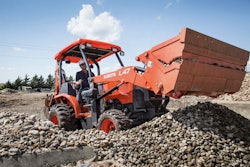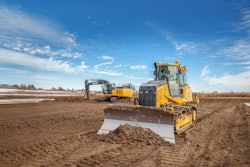
Dealerships across all sectors – on-road, off-road, light-duty, heavy-duty – echo a common refrain: “Technicians are our most valuable asset.” It’s a statement that sounds sincere, but how often do these words translate into real, actionable change?
Are dealerships truly backing up these claims, or are they simply paying lip service to a critical issue? The unfortunate reality, and the uncomfortable truth for many, is that the answer often lies somewhere between neglect and mismanagement.
Where are dealerships falling short? Let’s break down the core issues that affect the service department’s efficiency, the technician’s livelihood, and ultimately, the dealership’s bottom line.
The Technician-to-Admin Ratio: A Lopsided Support Structure
The first red flag for many dealerships is the staggering imbalance between the number of technicians and the administrative support that backs them up. For every technician in a service department, there should be adequate administrative personnel to ensure the flow of information, parts and work orders is seamless. But in reality, dealerships are often running on very lean support teams, with tech-to-admin ratios reaching as high as 6 to 10+ technicians for each admin staff member.
This imbalance creates a bottleneck. Service techs are pulled away from their primary focus – repairing vehicles and equipment – to handle administrative tasks that could be easily managed by additional support staff. Time spent tracking down work orders, ensuring accurate billing and chasing parts information is time not spent on the shop floor, fixing the vehicles and machinery that generate revenue for the dealership. The result? Reduced efficiency and techs spending more time doing non-revenue-generating tasks, which can directly impact their income if they’re on a flat-rate system.
Parts Support: The Lifeblood of Service Efficiency
Equally concerning is the state of parts support. Dealerships are failing to provide the essential parts infrastructure needed to keep technicians productive. Parts availability and quick access are a critical part of the equation that keeps the service department running smoothly. Without a well-organized parts department that works in sync with the technicians, the entire operation begins to suffer.
When parts aren’t readily available, techs waste time waiting for orders to be filled, and those lost hours add up quickly. For flat-rate techs, this is an even more painful issue. Not only do they have to deal with delays in getting the right parts, but they also lose income due to downtime, which is outside their control. Inadequate parts support is not just a minor inconvenience – it’s a significant drain on both technician productivity and dealership profitability.
The Impact of Ultra-Lean Operations on Efficiency
Running a service department with minimal staff in administration and parts creates a ripple effect that permeates the entire operation. The inefficiency is magnified by poor or outdated Enterprise Resource Planning (ERP) systems, which are often clunky, unintuitive or slow to adapt to the fast-paced nature of modern service departments. A technician who has to waste time navigating a cumbersome ERP system can easily lose valuable hours that could be spent working on the equipment that keep the business going.
In addition to hard-to-use or obsolete ERP systems, many dealerships face the added burden of over-the-top, cumbersome processes or unnecessary task loading. Service departments often find themselves bogged down by administrative red tape, excessive paperwork or redundant tasks that don’t add value to the customer or the operation. These processes become bottlenecks, slowing down the entire workflow. Rather than focusing on critical tasks that impact service efficiency and quality, techs and admin staff alike are spending valuable time on trivial tasks that could be streamlined or automated.
When the service department’s processes aren’t optimized and the techs are burdened with unnecessary administrative work, it creates an environment where efficiency is compromised, costs increase, and morale suffers.
The Financial Impact
For dealership owners and operators, the financial ramifications of all these inefficiencies are obvious. A service department that’s poorly staffed and poorly supported will see a dramatic impact on profitability. The dealership loses out on billable hours because techs can’t complete jobs in the most efficient manner. In many cases, it’s not just the dealership’s revenue that’s affected – it’s the technicians’ pay, too. Flat-rate techs who are paid by the job and not by the hour may find themselves seeing fewer hours worked due to inefficiency, leading to frustration and dissatisfaction.
The cost doesn’t stop at lost billable hours. The lack of a streamlined support structure increases the likelihood of mistakes, warranty claims and dissatisfied customers – all of which result in additional operational costs, lost reputation and lost opportunities for repeat business.
How to Address the Service Tech Support Shortage
The solution to these problems isn’t necessarily adding more techs. In fact, simply bringing in more technicians without addressing the underlying support and structural issues could end up exacerbating the situation. Instead, dealerships need to invest in the following:
- Improved Parts Support: Dealerships must ensure their parts departments are adequately stocked and organized. Implementing real-time inventory tracking and improving parts ordering systems can drastically reduce downtime.
- Streamline Processes & Task Load: It’s essential to remove unnecessary tasks and optimize processes so that the entire service department can focus on value-adding work. This means eliminating redundant procedures, automating tasks wherever possible and improving communication between departments.
- Training and Process Optimization: Service departments should invest in training for both technicians and administrative staff to ensure they are using systems and processes to their fullest potential. A streamlined, well-organized service flow will improve communication, reduce mistakes and increase productivity.
- Adequate Administrative Support: Increasing the number of support staff, or at the very least improving the ratio of admins to techs, is a direct way to alleviate many of the current burdens.
- Upgrade ERP Systems: An intuitive, fast, modern and well-integrated ERP system is key to improving efficiency. Techs and support staff need real-time access to work orders, parts availability, customer data and equipment information.
Conclusion
Whether it’s administrative support, parts availability, streamlined processes or modernized ERP systems, dealerships need to recognize that investing in the back end of their service departments is just as important as investing in their techs.
Start by taking a hard, honest look at your processes. Identify areas where time and resources are wasted and seek opportunities to streamline and optimize those workflows. Cutting unnecessary tasks, removing redundancies and implementing more efficient ways of working can make a big difference, even before larger investments are made.
Finally, as the dealer, take a step back and ask yourself: What will it take to improve how our most valuable service resource – the technician – can achieve their maximum potential? By putting the right support systems in place and continually striving to remove friction from their daily tasks, you’ll not only improve efficiency and profitability but will also ensure your service team remains engaged, motivated and capable of performing at the highest level.














